Potřebujeme váš souhlas k využití jednotlivých dat, aby se vám mimo jiné mohly ukazovat informace týkající se vašich zájmů. Souhlas udělíte kliknutím na tlačítko „OK“.
ASTM E1689-95(2014)
Standard Guide for Developing Conceptual Site Models for Contaminated Sites
Automaticky přeložený název:
Standardní Guide pro rozvoj koncepční modely místo pro kontaminovaných míst
NORMA vydána dne 1.1.2014
Informace o normě:
Označení normy: ASTM E1689-95(2014)
Poznámka: NEPLATNÁ
Datum vydání normy: 1.1.2014
Kód zboží: NS-42660
Počet stran: 9
Přibližná hmotnost: 27 g (0.06 liber)
Země: Americká technická norma
Kategorie: Technické normy ASTM
Kategorie - podobné normy:
Anotace textu normy ASTM E1689-95(2014) :
Keywords:
conceptual site model, ecological, hazardous waste site, human health, risk assessment, site characterization, ICS Number Code 13.030.30 (Special wastes)
Doplňující informace
| Significance and Use | ||||||||
|
5.1 The information gained through the site investigation is used to characterize the physical, biological, and chemical systems existing at a site. The processes that determine contaminant releases, contaminant migration, and environmental receptor exposure to contaminants are described and integrated in a conceptual site model. 5.2 Development of this model is critical for determining potential exposure routes (for example, ingestion and inhalation) and for suggesting possible effects of the contaminants on human health and the environment. Uncertainties associated with the conceptual site model need to be identified clearly so that efforts can be taken to reduce these uncertainties to acceptable levels. Early versions of the model, which are usually based on limited or incomplete information, will identify and emphasize the uncertainties that should be addressed. 5.3 The conceptual site model is used to integrate all site information and to determine whether information including data are missing (data gaps) and whether additional information needs to be collected at the site. The model is used furthermore to facilitate the selection of remedial alternatives and to evaluate the effectiveness of remedial actions in reducing the exposure of environmental receptors to contaminants. 5.4 This guide is not meant to replace regulatory requirements for conducting environmental site characterizations at contaminated (including radiologically contaminated) sites. It should supplement existing guidance and promote a uniform approach to developing conceptual site models. 5.5 This guide is meant to be used by all those involved in developing conceptual site models. This should ideally include representatives from all phases of the investigative and remedial process, for example, preliminary assessment, remedial investigation, baseline human health and ecological risk assessments, and feasibility study. The conceptual site model should be used to enable experts from all disciplines to communicate effectively with one another, resolve issues concerning the site, and facilitate the decision-making process. 5.6 The steps in the procedure for developing conceptual site models include elements sometimes referred to collectively as site characterization. Although not within the scope of this guide, the conceptual site model can be used during site remediation. |
||||||||
| 1. Scope | ||||||||
|
1.1 This guide is intended to assist in the development of conceptual site models to be used for the following: ( 1) integration of technical information from various sources, (2) support the selection of sample locations for establishing background concentrations of substances, (3) identify data needs and guide data collection activities, and (4 ) evaluate the risk to human health and the environment posed by a contaminated site. This guide generally describes the major components of conceptual site models, provides an outline for developing models, and presents an example of the parts of a model. This guide does not provide a detailed description of a site-specific conceptual site model because conditions at contaminated sites can vary greatly from one site to another. 1.2 The values stated in either inch-pound or SI units are to be regarded as the standard. The values given in parentheses are for information only. 1.3 This guide is intended to apply to any contaminated site. 1.4 This standard does not purport to address all of the safety concerns, if any, associated with its use. It is the responsibility of the user of this standard to establish appropriate safety and health practices and determine the applicability of regulatory limitations prior to use. |
||||||||
| 2. Referenced Documents | ||||||||
|
Podobné normy:
Historická
1.2.2009
Historická
1.2.2008
Historická
1.5.2013
Historická
1.1.2008
Historická
1.2.2007
Historická
15.1.2014


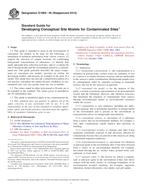
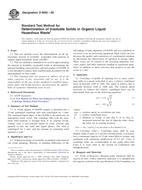 ASTM D6050-09
ASTM D6050-09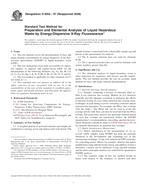 ASTM D6052-97(2008)..
ASTM D6052-97(2008).. ASTM D6160-98(2013)..
ASTM D6160-98(2013)..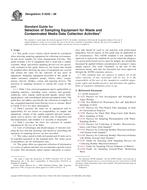 ASTM D6232-08
ASTM D6232-08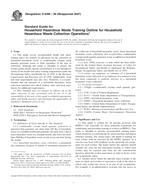 ASTM D6498-99(2007)..
ASTM D6498-99(2007)..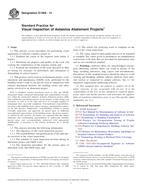 ASTM E1368-14
ASTM E1368-14
 Cookies
Cookies
